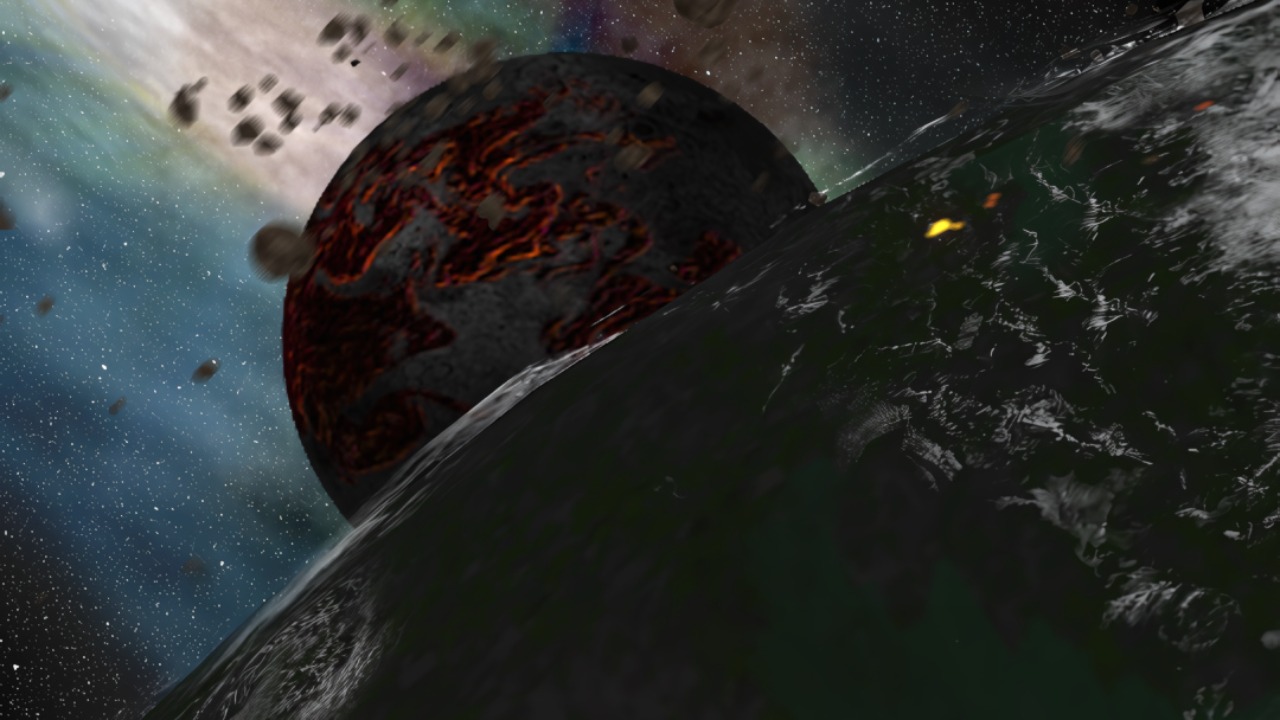
In a groundbreaking discovery, scientists have unearthed the first direct evidence that fragments of ‘proto-Earth’—ancient remnants from the planet’s formative stages—may still be nestled within the Earth’s mantle. This revelation, derived from recent geological analysis, suggests that material dating back over 4 billion years could be preserved deep beneath our feet, challenging long-standing theories about planetary evolution and opening new avenues for understanding Earth’s early history.
Understanding Proto-Earth
The concept of proto-Earth refers to the molten, undifferentiated body that took shape approximately 4.5 billion years ago, before the separation of the core and mantle. This primordial Earth was subject to colossal impacts, one of which is believed to have resulted in the formation of the Moon. These cataclysmic events likely fragmented the proto-Earth material, with some fragments potentially sinking into the mantle.
Seismic anomalies within Earth’s interior have long hinted at the existence of these ancient slivers. The recent discovery provides the first direct evidence supporting their survival, suggesting that our planet’s interior may harbor more secrets about its tumultuous past than previously thought.
The Discovery Process
The research team employed advanced geochemical analysis on rocks derived from the mantle to identify isotopic signatures that match the compositions of proto-Earth. This meticulous process involved the study of various rock samples, each potentially holding clues to our planet’s earliest days.
Alongside geochemical analysis, ultra-high-pressure experiments were conducted to simulate the conditions of early Earth. These experiments confirmed the stability of these slivers, suggesting they could have survived the intense pressures and temperatures for billions of years. The evidence was formally presented in scientific literature on October 21, 2025, marking a significant milestone in our understanding of Earth’s geological history.
Evidence from Mantle Samples
Specific rock samples from volcanic hotspots, such as those in Hawaii, played a crucial role in this discovery. These samples displayed enriched iron and other elements indicative of proto-Earth remnants, providing tangible evidence of ancient material preserved in the mantle.
Seismic imaging techniques further bolstered these findings by revealing dense, slab-like structures in the lower mantle. These structures are interpreted as surviving fragments of proto-Earth, adding to the growing body of evidence for primordial heterogeneity in Earth’s interior, preserved despite the convective mixing processes.
Implications for Planetary Formation
The survival of proto-Earth slivers suggests an incomplete differentiation process during Earth’s formation. This has significant implications for our understanding of core formation and magnetic field generation, potentially requiring a reevaluation of existing models.
Moreover, the discovery could shed light on Earth’s geochemical evolution, including the distribution of volatile elements like water from ancient reservoirs. It also opens up possibilities for comparative planetology, as similar ancient materials might exist on other planets, such as Mars, offering valuable insights into their formation and evolution.
Challenges in Detection
Despite the groundbreaking discovery, challenges remain in isolating proto-Earth signals amid the mantle’s convection and recycling processes over geological time. The current sampling methods, which rely on rare xenoliths brought up by volcanoes, also have their limitations.
Moreover, there are ongoing debates among geologists about whether these slivers truly represent proto-Earth or are remnants of later accreted material. These discussions underscore the complexity of Earth’s geological history and the need for further research to unravel its intricacies.
Future Research Directions
Looking ahead, plans are underway for deep-Earth drilling or lab simulations to directly access and analyze these ancient slivers. There is also a proposal to integrate AI-driven seismic modeling to map their global distribution more precisely, which could significantly enhance our understanding of Earth’s interior.
Interdisciplinary collaborations, combining geochemistry and astrophysics, are also being emphasized to refine timelines of Earth’s early history post-2025 discovery. As we delve deeper into our planet’s past, each discovery brings us one step closer to unraveling the mysteries of Earth’s formation and evolution.
More from MorningOverview